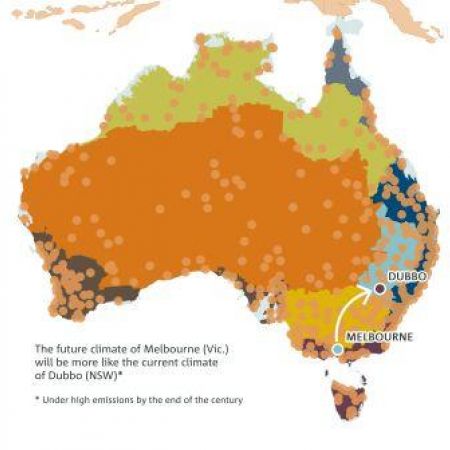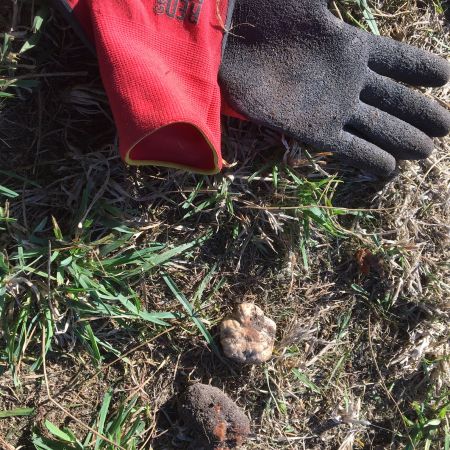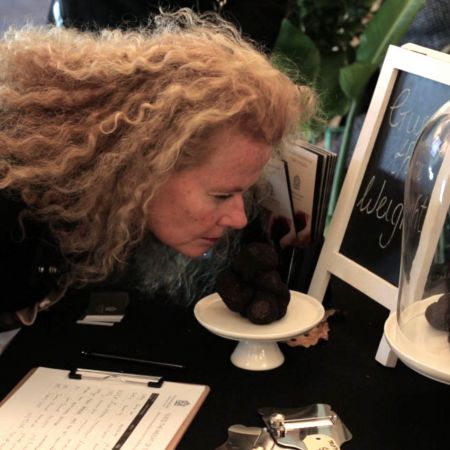A rapid train to Zaragoza takes us from coastal Barcelona into provincial Aragon. And then it’s the slow train to Teruel, passing through snow covered fields on a windy plateau. The past few days have seen major winter storms sweep through Western Europe (even closing the London-Paris rail link). Icy winds still blast down from the Pyrenees, with the foothills covered with snow. Teruel is the regional capital of Aragon – a beautifully preserved open air museum of ornate Mudejar monuments from the 13th century.
Quite apart from the dramatic change in the different hemispherical weather (we left Melbourne in late summer on a 38 degrees C summers day, and arrived in Teruel right at the end of the black truffle season in early March, with freezing winds and snow and daytime maximum temperatures of 2 C), the most important orientation is of course that in this part of Europe – you are in the natural home of the wild black truffle (Tuber Melanosporum).
Black winter truffles are found in the wild in central and southern France, north and eastern Spain, northern Italy and eastern Croatia. Unlike France however, Spain doesn’t have culinary traditions built around the mighty truffle. While the Spanish have been harvesting wild forest grown black truffles for decades, for the most part, harvesting wild truffles in Spain was undertaken by poor, small allotment farmers who sold their collected crop to French buyers – they didn’t cook with it at home.

Although the 19th century was the European “golden age of truffles”, with their establishment at the core of haute cuisine, black winter truffle production has collapsed in Europe since that time. France now produces perhaps only 10% of the 1,000 tonnes that was produced annually before World War 1. And wild truffle production continues to fall across France and Spain, exacerbated more recently by climate change pressures. The once traditional mixed use of native forests – some grazing, some light timber harvesting and truffle hunting – has ceased, as rural villages Spain and France have been abandoned as people moved to the cities or larger regional centres. So the forests have become dense thickets where truffles can no longer flourish.
So conference papers on planting truffles as a means of wild-fire protection come as a complete surprise to the antipodean! The Spanish are trying to reinvigorate their wild forests as well as using the new science of trufficulture to diversify crops and increased income for the many small landholders who cannot survive on an annual wheat crop from say, 10 Hectares. Cereal crop yields in Spain are perhaps only 1,500 Kg/Hectare, well below yields achieved in large scale farming in North America or Australia for example. As the European economies have weakened, especially since the GFC, the ability of European governments to continue to subsidise wheat production by small land-holders has diminished, while the low cost of planting with subsidised inoculated trees from regional truffle nurseries has become comparatively very attractive. Many Spanish growers at the conference would say “I have planted truffle trees because I have nothing to lose!”
There are now over 10,000 Ha of truffle plantations in Spain, with an additional 500 Ha being planted annually. Trees are supplied from 27 nurseries across Spain and these now produce perhaps ¼ Million trees each year, while the French have been planting perhaps 400,000 inoculated trees each year for decade.
So despite all this effort, supply is yet to eclipse the levels of a century ago, and new demand opportunities present themselves. If the French consumed the 1,000 tonnes they produced each year in 1910, isn’t there some prospect for world-wide demand to increase, not just in Europe, but in other developed countries and developing countries – China, South America and the Middle East for example? With Australian counter-cyclical fresh truffle production set to equal that of France or Spain within a decade, and new production coming onstream across the “New World” – Chile, South Africa, North America as well as Australia – we had better hope so.
The opening keynote presentation by Dr Santiago Reyna Domenench[1] ably demonstrated the international nature of trufficulture in 2013. And Australia came out on top of the yield per Hectare comparisons he presented, which quickly encouraged the 300 or so delegates to seek out the dozen or so Aussies at the conference!
Perhaps due to the European financial crisis, turnout for the 2013 conference was somewhat down on earlier international conferences – but the enthusiasm was high, even if the Spanish growers sometimes voiced concerns that many presentations were “too scientific for the average grower” – probably true, because it’s clear that the advances in DNA and other technologies has made the science considerably more complex and interesting since truffle DNA was cracked a few short years ago. That the truffle industry is now truly global is now undisputed though, with delegates at the conference from Spain, France, Italy, Germany, Austria, Poland, Slovenia, Scandinavia, the UK, USA, Canada, New Zealand, Chile (a big contingent!) and Australia – in all, 270 people from 23 countries attended.



